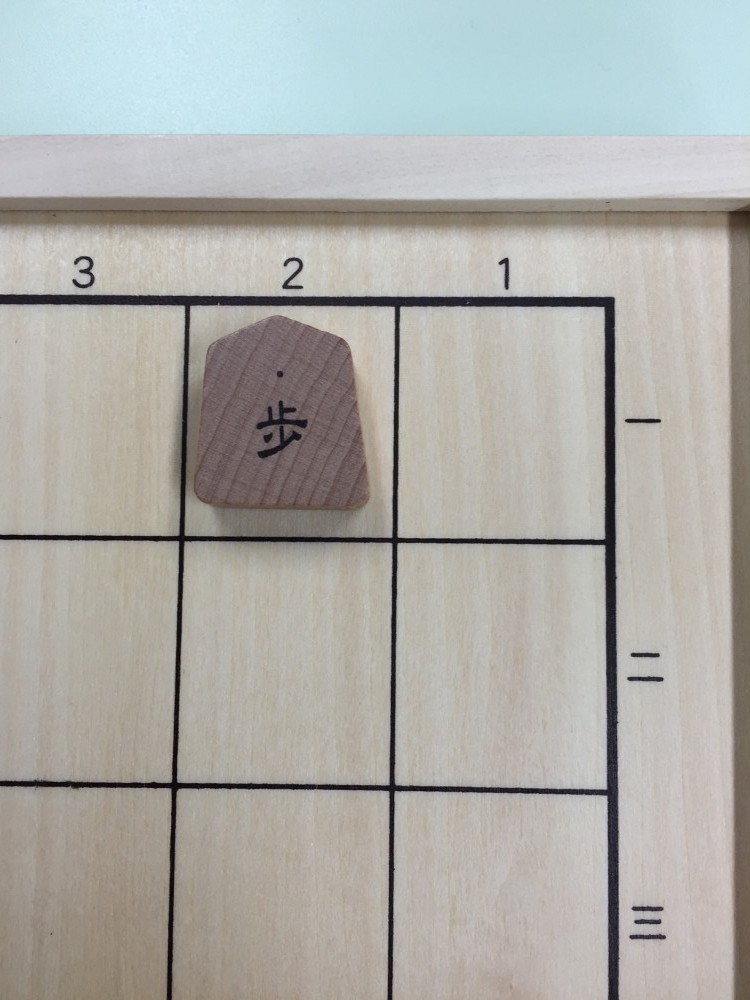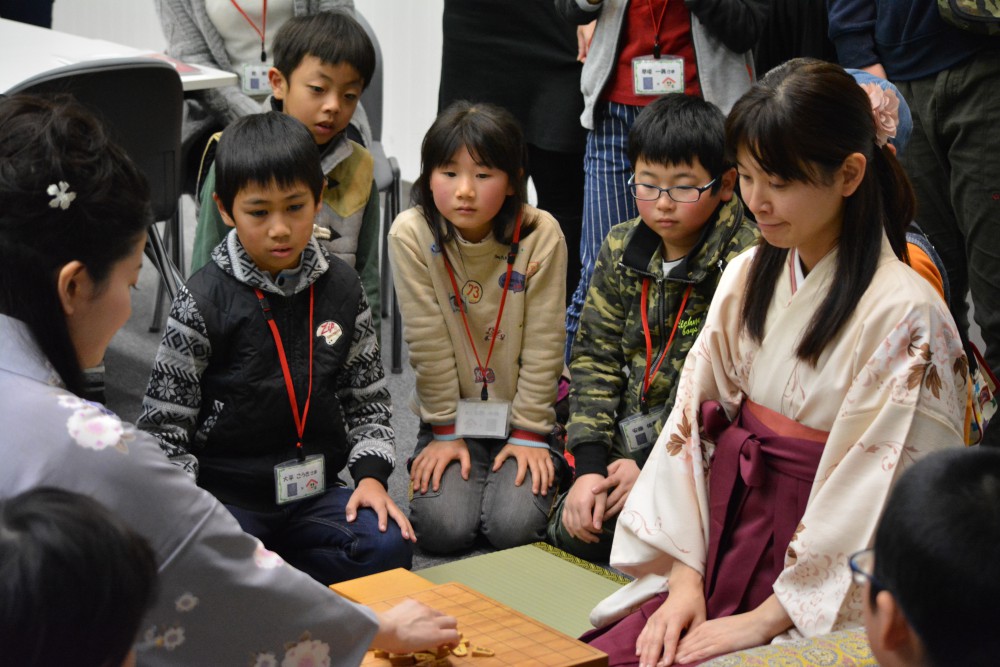Shogi 24 October 2016
Shogi Rules – How to Play Shogi – : Step 1-6 Drop Shogi Pieces
Explore art of Shogi. A professional Shogi player invites you to the world of Shogi along with traditional Japanese culture.
“Shogi Rules – How to Play Shogi – “ are available on the blog of I-tsu-tsu Co., Ltd.
Even a novice player will be able to play a standard Shogi. There are three steps and one step has approximately 20 lessons. You will be able to play Mini Shogi in Step 1, and it is full of fun!
The previous step
We call it “Utsu (drop)” to place “Mochigoma (captured piece in hand)” on the board. You can drop Mochigoma anytime if it is your turn, but you never drop a piece with its back side up. Also, you cannot drop a piece at the position where the piece cannot move anywhere as seen in the below picture with the Pawn.

We use this term of “Utsu (drop)” only for Mochigoma. Generally, the term of “Sasu (move)” is used in Shogi. On the other hand, the game of Go always uses the term of “Utsu.” We say, “let’s move pieces” to play Shogi, while “let’s drop pieces” is used for playing Go. Professional Shogi players are sometimes called as “Shogi Sashi,” literally meaning a Shogi piece mover in Japanese.

Kaori and Ayumi nicely dropped Mochigoma. It is “Kinjite (illegal move)” to place a piece in the position where it has nowhere to go, and you will lose. So be careful about it.
Comments from the girls’ mother
Why does Shogi use the term of “Sasu (move)”, while Go uses “Utsu (drop)”? A simple question emerged in my mind. In Shogi, a player “moves” pieces that are already set on the board, while in Go, a player “drops” pieces on the board where nothing is on at the beginning. That could be a reason for the difference, perhaps? My girls do not care about such things and just learn the terms. Such simplicity may be important to start something new. Simple and free of preconception. I have noticed that these are advantage of children to learn a new thing since my girls start this Shogi lesson.
The next step





